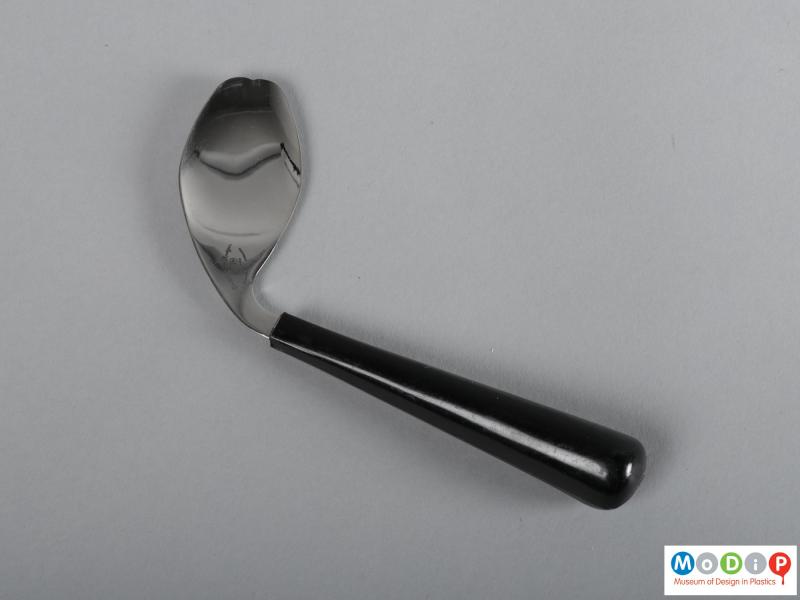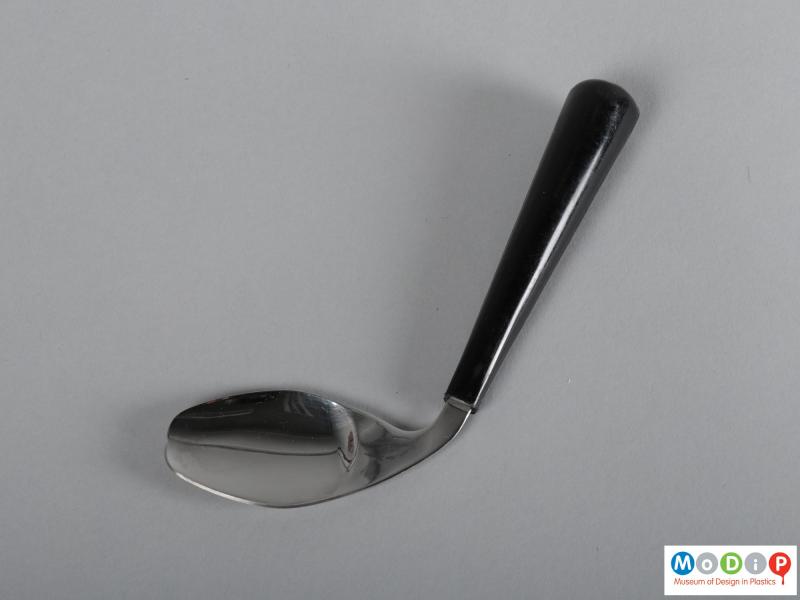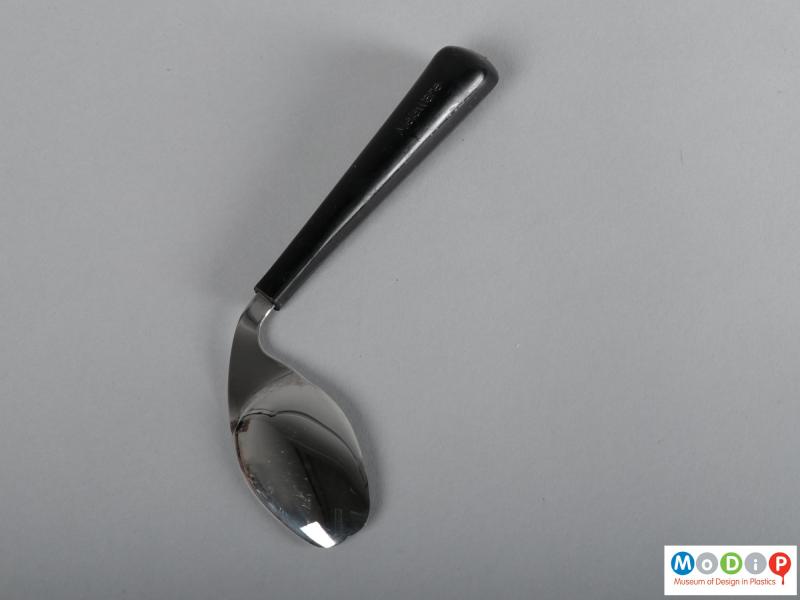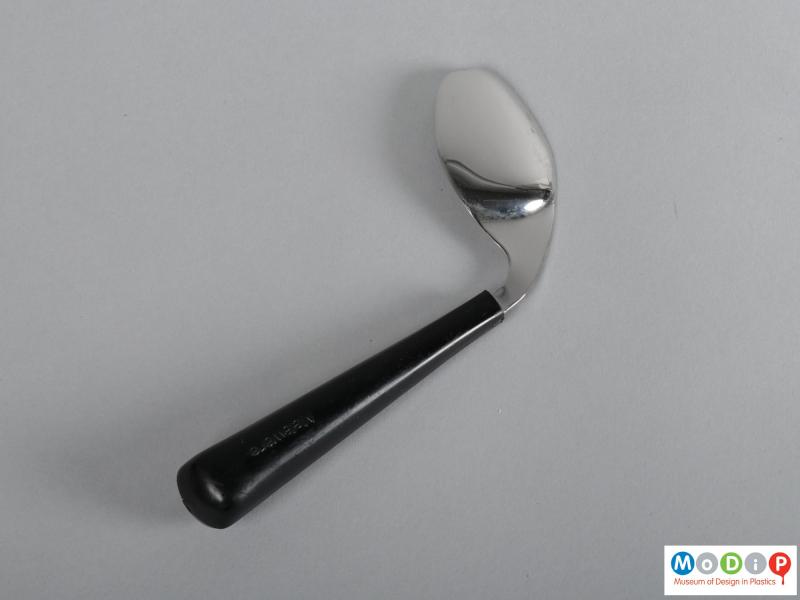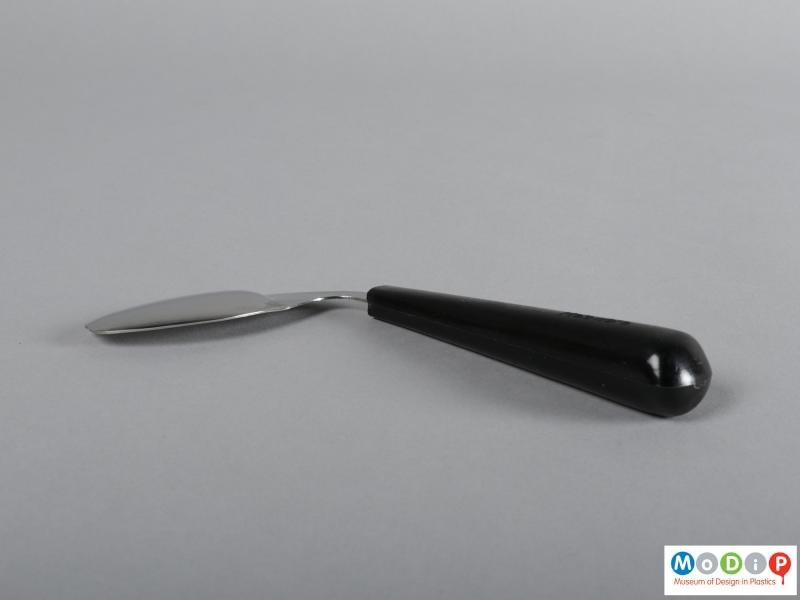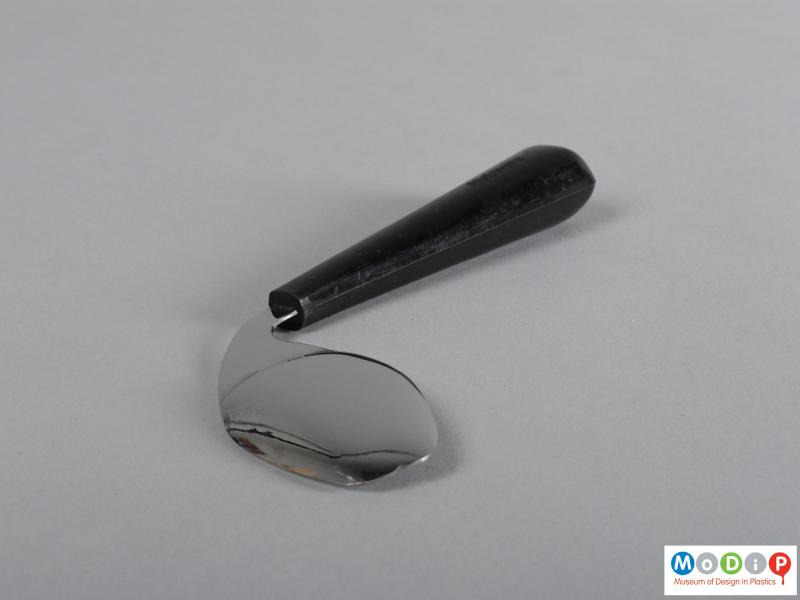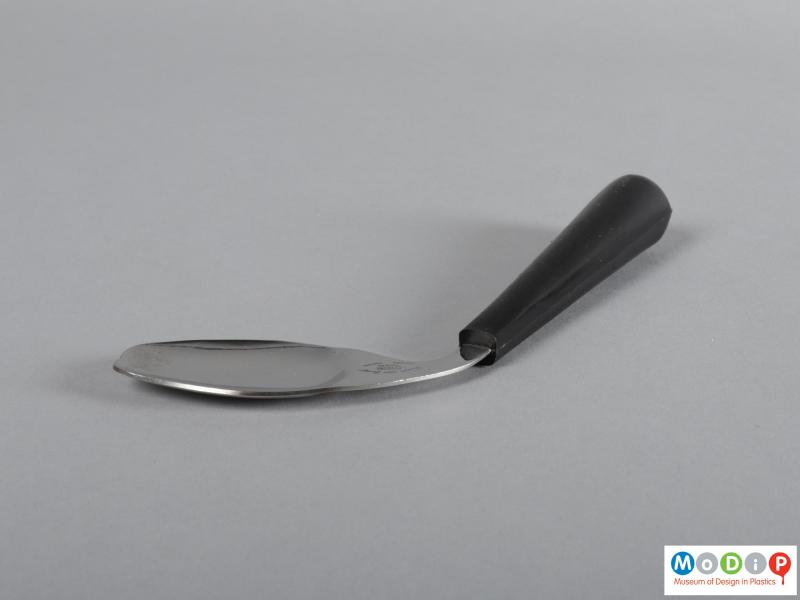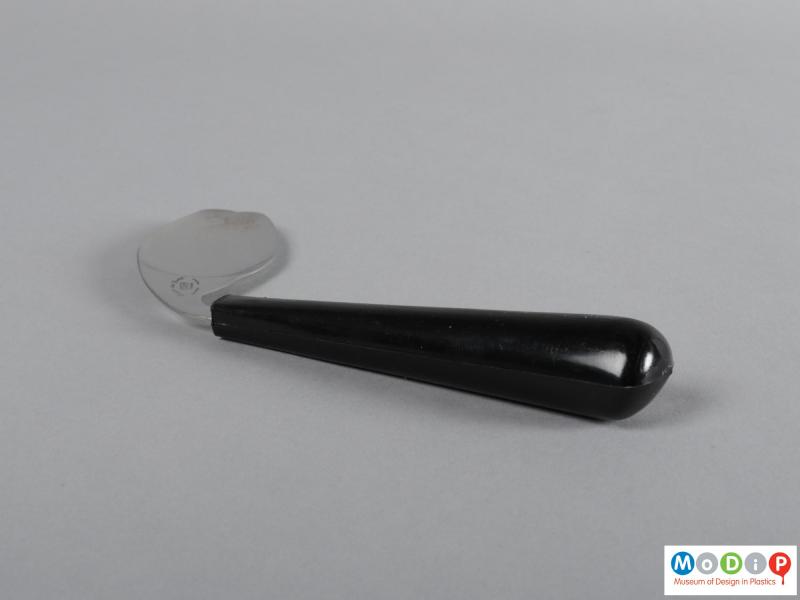Classification
Description
A left-handed spoon/fork designed by New Zealand industrial designer Russell Manoy in 1969 as part of a tableware set for disabled users, with particular reference to those suffering from rheumatoid arthritis, as well as for children and the elderly. The range also included a knife (see AIBDC : 008786.1), a large and small plate (see AIBDC : 008783 and 008784 respectively) and a beaker (see AIBDC : 008785, 006616SA, 007774.1 and 007774.2). This double purpose cutlery has a black coloured melaware handle and a stainless steel bowl made by Joseph Rodgers & Sons Ltd. The melamine was selected for its better than normal break-strength, design flexibility, lightness in weight, hygenic easily cleaned finish and low cost of production. Compression moulded, the simple ergonomic handle design helped to reduce tooling costs and for production economy, the same handle was utilised on the knife. The triangular shaped design with radiused edges provides improved grip and the blade is angled to reduce wrist flexion in use.
Designers & Manufacturers
Designer (Person)
Manufacturer
Inscriptions
moulded: "Melaware" (reverse side of handle)
Object number
AIBDC : 008786.2
Date
1969
Country
Method
Material
Dimensions
Width
90mm
Length
180mm

